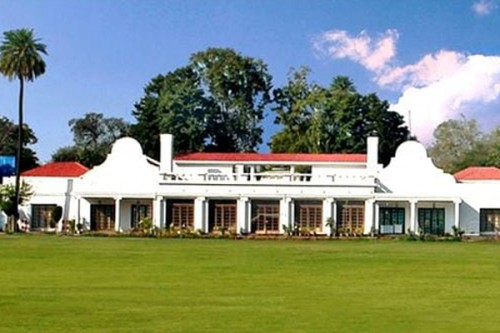Home to exiled Mughal princess, birthplace of the BCCI: Roshanara Club's many lives

New Delhi, Sep 29 (IANS) With Friday's takeover of the iconic Roshanara Club by the Delhi Development Authority (DDA), a historical landmark dating back to the reign of Aurangzeb enters a new era.
Although it is famous as the birthplace of the Board of Control for Cricket in India (BCCI), Roshanara's history dates back to the colourful Mughal princess after whom it is named.
Roshanara earned the gratitude of Aurangzeb in his battle of succession with his father Shahjahan's favourite eldest son, Dara Shukoh, by forewarning him about the goings-on within Red Fort and siding with him when he vanquished his brother and imprisoned his father in Agra.
The princess became so powerful that he was given the title of Padshah Begum and her writ was considered the law till Aurangzeb, his ears filled by his wives and not appreciative of his sister's penchant for entertaining multiple lovers, banished her to a palace he built for her on the fringes of a thick forest. It was there that he had her killed through slow poisoning.
She died there in 1671, at the age of 54, "swollen like a hogshead, leaving behind her the name of great lasciviousness," in the words of William Dalrymple ('City of Djinns'). And she was interred there in a garden she had laid out, which survives as the Roshanara Bagh.
Two centuries later, when Delhi was back firmly in the grip of the British Raj, the then Deputy Commissioner, a Colonel Cracroft, decided to clear up the gardens laid out by the Mughals, including Roshanara's palace, barring the baradari that still exists, and turn them into green lungs for British officers who had moved down to the area that became known as the Civil Lines to escape the "irremediably vicious" environs and "bad air" of the Walled City.
It was the same time when Tis Hazari -- the orchard with 30,000 fruit-bearing trees -- was torn down to make way for a shooting range exclusively for the use of the local British elite.
The Roshanara Club was founded on August 15, 1922 (the date may seem ironical today), by the Indian elite of Delhi, most likely as a counter to the 'For Europeans Only' Imperial Delhi Gymkhana Club, which was opened on July 3, 1913, under the leadership of Sir Spencer Harcourt Butler, when was serving as the Member (Education) of the Viceroy's Executive Council.
The founders of the Roshanara Club included prominent businessman Rai Bahadur Amba Prasad, who was into the manufacture of chemicals and dyes; Sir Sobha Singh, builder of New Delhi and father of Khushwant Singh, who was the key witness against Bhagat Singh and Batukeshwar Dutt in the Delhi Assembly bombing case; Rai Bahadur Sultan Singh, a businessman who was also very close to Mahatma Gandhi; and R.E. Grant Gowan, British industrialist and aviator who set up the Indian National Airways (now famous as the INA of another Delhi landmark - INA Market), which was later merged into the nationalised Indian Airlines.
Gowan went on to become the first president of the BCCI, when it was formally established in 1928, a year after it was born at a meeting held at the Roshanara Club on December 10, 1927.
From Roshanara Begum to the BCCI, the Club has seen many a milestone event, all this while also serving as the address where the elite of Purani Dilli unwind over drinks and kababs, and soak in the winter sun on its sprawling gardens where once the doomed princess walked.

|

|

